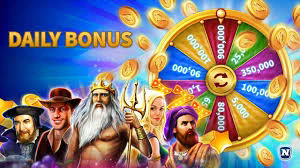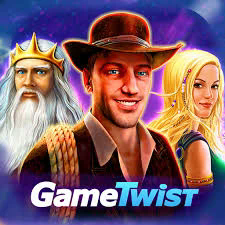# Is Twister a Board Game?
Twister is an iconic party game that has stood the test of time since its inception in the 1960s. Its unique blend of physical activity, humor, and social interaction has made it a staple at gatherings, family game nights, and even college parties. While it may not fit the traditional mold of what many consider a board game, it incorporates elements that transcend typical gaming categories. This article explores Twister’s origins, gameplay mechanics, cultural significance, and its classification within the realm of games.
## The Origins of Twister
Twister was invented in 1966 by Charles Foley and Neil Rabens, two aspiring game designers who were seeking to create a game that would break the boundaries of conventional table-based games. Initially, it was called “Twist,” but the name was changed after feedback from a focus group. The game was published by Milton Bradley and quickly gained traction through an innovative marketing campaign that included a memorable television advertisement featuring celebrities like Johnny Carson and Eva Gabor playing the game.
The concept combined physical skill with a simple premise: players must place their hands and feet on colored circles on a large mat according to the spin of a dial. The game encourages physical closeness and often leads to hilarious entanglements, making it a hit party game. Its whimsical nature captured the essence of fun and introduced a new way to interact with friends and family.
## How to Play Twister
Twister is set up on a large, colorful mat featuring six rows of colored circles (red, yellow, green, and blue), along with a spinner that determines which color and body part players will use. The basic gameplay involves the following steps:
1. **Setup**: Spread out the mat on a flat surface and ensure there is enough space for players to move around freely.
2. **Player Arrangement**: Gather at least two players. The game works best with four or more players for maximum hilarity.
3. **Starting the Game**: One player spins the dial to determine the color and body part (left hand, right hand, left foot, right foot) that must be used. Players must then place the specified body part on the indicated color.
4. **Continuing the Game**: Players take turns spinning the dial and following the same rules. As more players join, the challenge intensifies, with bodies intertwining and a lot of laughter ensuing.
5. **Winning the Game**: The game continues until a player falls or is unable to maintain their position, making them the loser. The last player standing is declared the winner.
The beauty of Twister lies in its simplicity; there are no complex rules or strategies, making it accessible to players of all ages.
## Twister’s Unique Characteristics
What sets Twister apart from traditional board games is its emphasis on physical interaction over strategic gameplay. Unlike games that rely on dice rolls or cards, Twister requires players to be fully engaged physically. This can lead to unforeseen scenarios where players must contort their bodies in awkward positions, often resulting in laughter and camaraderie. The game creates shared experiences that can elevate social atmospheres, making it a vehicle for bonding and fun.
Additionally, Twister is adaptable. While the basic rules are straightforward, players often introduce house rules or variations to keep the game fresh and exciting. Some may choose to add additional challenges, such as incorporating music or time limits to each turn. This flexibility allows Twister to remain relevant and entertaining across generations.
## The Cultural Impact of Twister
Twister emerged during a time of social change in the 1960s and 70s, a period marked by a burgeoning counterculture movement and a departure from traditional social norms. The game’s emphasis on physical closeness and playful competition resonated with a younger generation eager to break free from societal constraints. It quickly became a symbol of fun, and its popularity soared in mainstream culture.
In pop culture, Twister has made numerous appearances in movies, TV shows, and even merchandise. Its visual appeal, characterized by the bright, vibrant colors of its playing mat, has made it a recognizable icon. The game has been referenced in films like “Friends,” “The Office,” and “The Big Bang Theory,” solidifying its place in cultural history.
Moreover, Twister has found itself at home in various settings beyond casual gameplay. Schools and organized events often use it as an icebreaker or team-building exercise, showcasing its versatility as a game designed to foster social interaction.

## Twister in the Digital Age
As technology has evolved, so has Twister. The advent of digital games has given rise to app versions of Twister, allowing players to enjoy the game virtually. These adaptations often include innovative features, such as augmented reality, enabling users to play on a digital mat or even in their own environments.
While these digital versions aim to capture the spirit of the original game, nothing can quite replicate the physical experience of playing Twister in person. Nevertheless, the evolution of Twister into the realm of technology signifies its enduring relevance in an ever-changing gaming landscape.

## Health Benefits of Playing Twister
Beyond its entertainment value, Twister also offers several health benefits. The game encourages physical activity, making it an engaging way to exercise. Players must stretch, bend, and balance, which can enhance flexibility and coordination. Particularly appealing for children and teens, Twister provides a fun way to promote physical movement, something increasingly necessary in a world dominated by screen time.
Playing Twister can also enhance social skills. The game encourages communication, cooperation, and healthy competition, essential elements for building relationships. As players navigate through the game, they learn important interpersonal skills by observing each other’s movements and strategizing on how to maintain their position while still following the game’s rules.
Furthermore, laughter is an integral part of Twister, and laughter has been scientifically linked to numerous health benefits, such as reducing stress and improving mood. The game creates an atmosphere where humor thrives, contributing to mental well-being while fostering connections among players.
## The Future of Twister
As Twister continues to evolve, its future looks bright. The game has endured through various cultural shifts and technological advancements, demonstrating its ability to adapt while maintaining its core essence. New generations discover Twister, introducing it to friends and family, ensuring that the laughter and excitement live on.
Milton Bradley has expanded the Twister brand with specialized versions, including Twister Dance and the themed Twister editions tied to popular movies or characters. These adaptations cater to changing preferences while preserving the fundamental gameplay that has captivated players for decades.
## Conclusion: Twister as an Enduring Classic
Is Twister a board game? The answer is nuanced. While it may not fit the traditional definition of a board game that typically encompasses strategic thinking and tabletop mechanics, Twister is undoubtedly a game with significant cultural, social, and physical dimensions. Its unique gameplay, rooted in physical interaction, humor, and adaptability, has made it an enduring classic enjoyed by people of all ages.
From its humble beginnings in the 1960s to its rise as a cultural phenomenon, Twister exemplifies the joy of play and the importance of social connection. Whether you’re getting tangled up with friends during a lively game night or introducing it to a new generation, Twister continues to bring people together, transcending the definition of what a game can be. The legacy of Twister is one of laughter, connection, and fun—a timeless reminder of the power of play.
